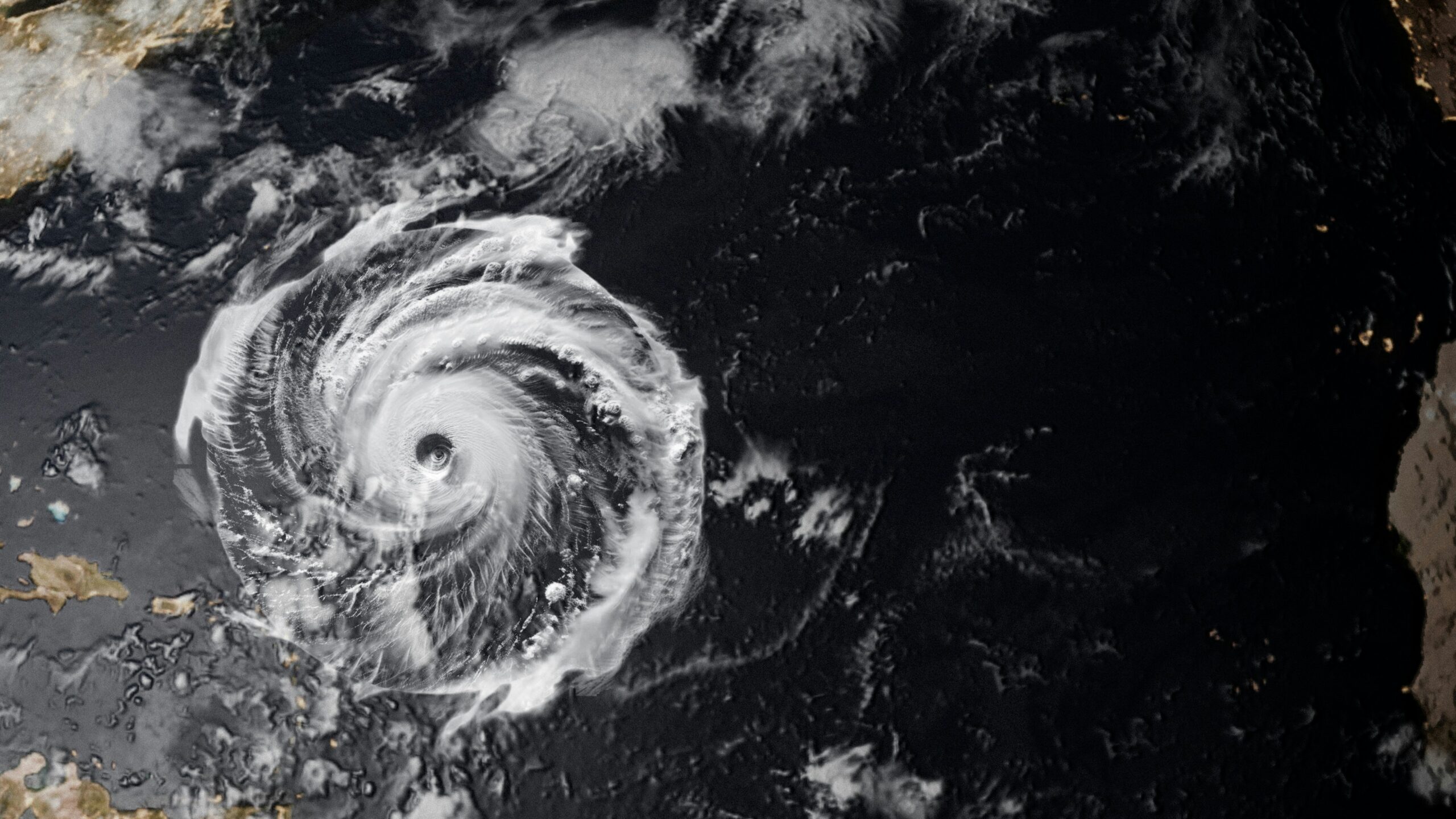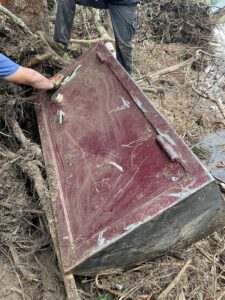Hurricane season has arrived and typically lasts until November. Areas that are close to the coast and/or tropical regions are prone to hurricanes. Specifically, Florida, South Carolina, North Carolina, and even the New England states are all potential areas where hurricanes can cause the most damage.
No matter where you live, it’s important to understand how to best prepare for a hurricane if you receive notification that one is heading your direction. We thought it would be the perfect time to give an overview of what steps you should take to protect your family and what you should do to protect the valuables you can’t take with you.
If you’re considering a waterproof safe you’ve found on the market, you must understand that there isn’t a 100% “waterproof” safe currently on the market. This guide will cover what other security measures you should invest in and how to best protect your valuables.
FAQs for How to Prepare for a Hurricane
What areas are at risk during hurricane season?
Hurricane season typically lasts from the beginning of the year until November. Coastal and tropical regions are most prone to hurricanes, with specific high-risk areas including Florida, South Carolina, North Carolina, and even some New England states.
What should be included in a hurricane prep kit?
Typical items include non-perishable food, water, medications, flashlights and batteries, and important documents like insurance, medical records, etc.
How should I prepare my home for a hurricane?
Board up all vulnerable areas like windows and reinforce any doors. For valuable items you have to leave behind, it’s beneficial to invest in a high-quality safe that could add an extra layer of protection during high winds and/or floods.
Should I purchase a waterproof safe?
While no safe is completely waterproof, it’s still worth investing in a high-quality fire or burglary-rated model. These safes are built with durable materials and advanced features that offer strong protection, even in extreme conditions.
Understanding Hurricanes and How to Prep For Them
First things first, you should understand your area’s hurricane threat level and where the possible evacuation zones you may need to relocate to are. Hurricanes are often given a name and are monitored and labeled by the following categories:
Category 1: Winds ranging between 74-95 mph
Category 2: Winds ranging between 96-110 mph
Category 3: Winds ranging between 111-129 mph
Category 4: Winds ranging between 130-156 mph
Category 5: Winds are 157 mph or higher
Source: National Weather Service
Depending on how high the category is for the hurricane in your area, local authorities may enforce evacuations to commence. It’s important to have a plan before evacuations or a hurricane hits your area. This reduces panic and stress, knowing that you and your family are prepared for the worst-case scenario. Evacuation notices typically come with directions and locations citizens should go to, but it’s important to know what you plan to do with your valuables before disaster strikes.
This is where a reliable safe can make all the difference during catastrophes like a hurricane. Unfortunately, you can’t take your whole home with you, so in order for the things you leave behind to stand a chance against high winds and flooding, a durable safe could be the solution.
While there isn’t such a thing as a waterproof safe, investing in a high-security or fire-rated safe is worth it even during situations like this. When a safe is highly rated for burglary and/or fire, you’ll have peace of mind knowing that the model has been crafted with high-quality materials that could hold up well during storms.
Build a Hurricane Emergency Prep Kit
A hurricane prep kit typically looks similar to what you might find in a wildfire prep kit. It should include the following:
- Non-perishable food
- Water
- Medications you or family members need to take regularly
- Flashlights, portable chargers, batteries, etc.
- Important documents like birth certificates, passports, insurance, medical records, etc.
- Personal hygiene supplies
If you need to stock up on supplies, do it early. As a storm approaches, stores quickly become crowded with people scrambling to grab last-minute essentials. Waiting too long can leave you with limited options and unnecessary stress. Instead, plan ahead by assembling a hurricane prep kit before the season starts. A little preparation now can save you time and worry later.
Prepare Your Home for Hurricane Impact
No matter if you plan on staying or need to evacuate your home, before the storm rolls in, you can take some steps to bolster your home. Here are a few things you can do.
Secure Windows
Use materials like plywood to board up and secure your windows to prevent them from breaking during high winds. This proactive approach gives your home a chance to hold up if the winds cause projectiles to fly towards your windows.
Clear Your Yard
If you have an opportunity to help prevent projectiles like branches from flying into your home, pick up any large debris lingering around your property. You can’t help if branches or trees fall in the surrounding areas, but you can try and take some preventative measures to lower the chances of something damaging your home during the storm.
Reinforce Doors and Garages
Garage doors are especially vulnerable to high winds. If possible, install braces or a retrofit kit to strengthen them. For entry doors, check the hinges and deadbolts to make sure they are secure and properly aligned. A strong door frame and locking system can help maintain the structural integrity of your home during the storm.
Can You Protect Your Valuables With a Waterproof Safe?
We mentioned earlier that there isn’t a fully waterproof safe on the market today. However, this doesn’t mean there aren’t security solutions that could help protect your valuables for a significant amount of time during a devastating storm like a hurricane. Instead, by shifting your focus on industry standards like burglary and fire ratings, you can still ensure your safe is built with the utmost care and features high-quality materials. Let’s go over this in a little more detail.
Steel Body Quality
The backbone of any high-quality safe is its steel body. The thicker the steel, the better the safe can resist external pressure, impacts, and attempts at forced entry. In hurricane scenarios, heavy-duty steel helps anchor the safe more effectively, reducing its chances of tipping, shifting, or being carried away by storm surge or wind-driven debris. American Security safes are built with reinforced steel walls and doors, offering an extra layer of defense when nature becomes unpredictable.
Door Seals
While no door seal is entirely floodproof, having high-quality seals can make a significant difference. In a hurricane, floodwaters may eventually compromise even the best seals, but they still provide critical resistance to water intrusion, slowing down damage and giving you more time to recover your valuables.
American Security safes are equipped with multi-layered door seals, including intumescent seals that expand when exposed to heat. These seals not only help with water resistance but are also highly effective in keeping out smoke and flames during a fire—another common threat during natural disasters. Even if the exterior is compromised, quality seals can minimize internal exposure.
Bolting Down Your Safe
Some safes come with pre-drilled holes and hardware for anchoring, which can prevent movement during high winds or flooding. Most American Security safes are built with anchor holes and come with hardware to help you secure your safe in the room of your choosing.
The Importance of Safe Ratings
Fire and burglary ratings help validate that a safe is designed to endure serious damage to its door and body, confirming that it’s capable of effectively protecting the interior contents.
Fire ratings indicate how long a safe can protect its contents from high temperatures during a fire, often ranging from 30 minutes to two hours. These ratings are typically based on rigorous tests that simulate real fire conditions, giving you peace of mind that irreplaceable items have a better chance of surviving exposure to high heat.
Burglary ratings measure how resistant a safe is to forced entry. A higher burglary rating means the safe has been tested against tools, pressure, and prying attempts, and has proven its ability to delay or prevent unauthorized access. These tests can last hours as the timer starts when the testers are touching the safe and stops whenever they need to switch tools.
When you see these ratings, especially from reputable testing agencies like UL (Underwriters Laboratories) or ETL, it’s a sign that the safe has been built to a trusted standard. This gives you the utmost confidence in your investment.
A Real-World Example of How a Safe Helped Protect What Mattered Most in a Hurricane
In September 2024, Hurricane Helene unexpectedly swept through Western North Carolina, causing widespread destruction. In the aftermath, Bryan Craig contacted American Security to share how his parents’ safe protected some of his family’s most valuable possessions amid the devastation.
Bryan’s family home was hit hard by the storm. Intense flooding and landslides ripped through the area, and their American Security safe, which had been in the home for years, was carried away by the force of the storm. Despite the safe traveling miles from where it had originally been installed and badly damaged, the contents inside were remarkably well preserved, offering a small but meaningful sense of relief during an otherwise devastating time.
Read our full story on how the Craig family’s safe was uncovered and how a highly rated safe can make the biggest difference during unexpected disasters.
Key Takeaways on How to Prepare for a Hurricane and Protect What Matters Most
Once hurricane season is here, it sticks around for many months, so it’s important to build out a preparedness plan just in case a storm rolls in. Make sure to keep you and your family informed on storm developments by checking in with local authorities and news stations for potential evacuation notices or new storm updates.
As far as protecting the valuable items you have to leave behind, a burglary and/or fire-rated safe can be a solid choice even for hurricanes or other storms.

